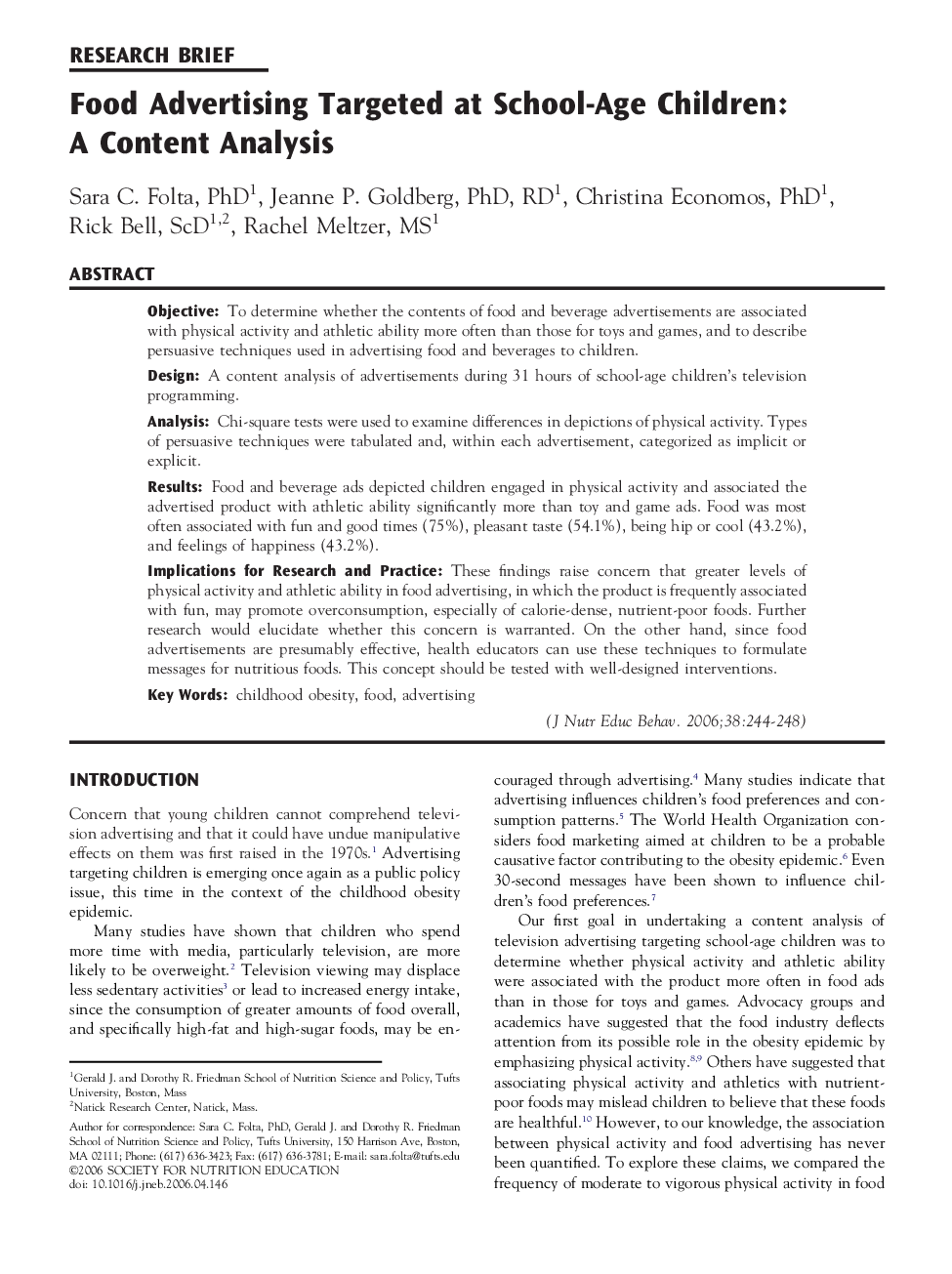| Article ID | Journal | Published Year | Pages | File Type |
|---|---|---|---|---|
| 363407 | Journal of Nutrition Education and Behavior | 2006 | 5 Pages |
ObjectiveTo determine whether the contents of food and beverage advertisements are associated with physical activity and athletic ability more often than those for toys and games, and to describe persuasive techniques used in advertising food and beverages to children.DesignA content analysis of advertisements during 31 hours of school-age children’s television programming.AnalysisChi-square tests were used to examine differences in depictions of physical activity. Types of persuasive techniques were tabulated and, within each advertisement, categorized as implicit or explicit.ResultsFood and beverage ads depicted children engaged in physical activity and associated the advertised product with athletic ability significantly more than toy and game ads. Food was most often associated with fun and good times (75%), pleasant taste (54.1%), being hip or cool (43.2%), and feelings of happiness (43.2%).Implications for Research and PracticeThese findings raise concern that greater levels of physical activity and athletic ability in food advertising, in which the product is frequently associated with fun, may promote overconsumption, especially of calorie-dense, nutrient-poor foods. Further research would elucidate whether this concern is warranted. On the other hand, since food advertisements are presumably effective, health educators can use these techniques to formulate messages for nutritious foods. This concept should be tested with well-designed interventions.
